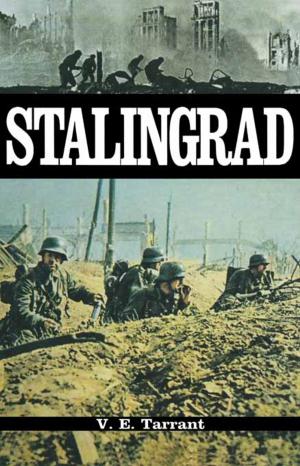The Long Left Flank
The hard Fought Way to the Reich 1944-1945
Nonfiction, History, Military, World War I| Author: | Jeffery Williams | ISBN: | 9781473816039 |
| Publisher: | Pen and Sword | Publication: | September 26, 1988 |
| Imprint: | Leo Cooper | Language: | English |
| Author: | Jeffery Williams |
| ISBN: | 9781473816039 |
| Publisher: | Pen and Sword |
| Publication: | September 26, 1988 |
| Imprint: | Leo Cooper |
| Language: | English |
When in August, 1944, the Allies broke out of Normandy, the world's attention became fixed on the dramatic British and American armoured thrusts into the Rhine. The war in Europe seemed all but over. Far to the left, along the flank of the Allied Expeditionary Force, almost unnoticed, a battle was beginning on whose outcome hung not only victory but the possibility of disaster Under-strength, neglected by Montogomery and denied by Eisenhower the supposed which he had promised, First Canadian Army paid an appalling price in casualties to clear the Channel coast and open up the great port of Antwerp. Commanded by General Harry Crerar , the army contained not only Canadians, but, for most of the campaign, more British troops then the Eighth Army at Alamein. Poles, Americans, Dutch, Belgians, Czechs and French served in it and were partnered in all their operations by the equally international No.84 Group, RAF. Their hard-won success in clearing the banks of the Scheldt and in capturing Walcheren Island was followed four months later by victory in the Rhineland. There, with almost every one of Montgomery's British Divisions under command, they smashed the best of what remained of the German Army and, with it, Hitler's last hope of defending the Rhine. The way was open for the Allies into the heart of the Reich. In the war's final phase, most of Crerar's British divisions were replaced with by Canadian formations newly arrived from their arduous campaign in Italy. Striking north and west after crossing the Rhine, they liberated Holland and drove east-ward into the heavily defended area of Germany. At war's end they had reached the Weser and were closing on the great naval bases of Emden and Wilhemshaven. Jeffery Williams won wide acclaim for his definitive biography Viscount Byng of Vimy. He brings the same assured touch to this lively and fast-moving account of a crucial aspect of the battle for North-West Europe which has hitherto been largely neglected by historians.
When in August, 1944, the Allies broke out of Normandy, the world's attention became fixed on the dramatic British and American armoured thrusts into the Rhine. The war in Europe seemed all but over. Far to the left, along the flank of the Allied Expeditionary Force, almost unnoticed, a battle was beginning on whose outcome hung not only victory but the possibility of disaster Under-strength, neglected by Montogomery and denied by Eisenhower the supposed which he had promised, First Canadian Army paid an appalling price in casualties to clear the Channel coast and open up the great port of Antwerp. Commanded by General Harry Crerar , the army contained not only Canadians, but, for most of the campaign, more British troops then the Eighth Army at Alamein. Poles, Americans, Dutch, Belgians, Czechs and French served in it and were partnered in all their operations by the equally international No.84 Group, RAF. Their hard-won success in clearing the banks of the Scheldt and in capturing Walcheren Island was followed four months later by victory in the Rhineland. There, with almost every one of Montgomery's British Divisions under command, they smashed the best of what remained of the German Army and, with it, Hitler's last hope of defending the Rhine. The way was open for the Allies into the heart of the Reich. In the war's final phase, most of Crerar's British divisions were replaced with by Canadian formations newly arrived from their arduous campaign in Italy. Striking north and west after crossing the Rhine, they liberated Holland and drove east-ward into the heavily defended area of Germany. At war's end they had reached the Weser and were closing on the great naval bases of Emden and Wilhemshaven. Jeffery Williams won wide acclaim for his definitive biography Viscount Byng of Vimy. He brings the same assured touch to this lively and fast-moving account of a crucial aspect of the battle for North-West Europe which has hitherto been largely neglected by historians.















